Choosing the right speakers becomes challenging when faced with dozens of options, from compact desktop models to tower-sized systems, each made for different listening environments.
The global speaker market reached USD 15.57 billion in 2024 and is projected to reach USD 20.49 billion by 2030, driven by wireless technology and smart home adoption.
Knowing different types of speakers helps you match your listening needs with the right audio solution for your space, budget, and preferences.
Key Takeaways
- Speaker size directly affects frequency response capability; larger speakers generally produce deeper bass and higher maximum volume levels.
- THX standard specifies an 80 Hz crossover frequency for subwoofers in home theater applications, although optimal settings vary by room and speaker combination.
- Smart speakers are the fastest-growing category, combining traditional audio with voice control and home automation capabilities
- Proper placement and room acoustics significantly affect speaker performance regardless of type, making positioning as important as speaker selection
- Different applications require specific speaker priorities: portability for travel, accuracy for professional use, and weather resistance for outdoor installations
1. Active vs Passive Speakers
Active speakers include built-in amplification and digital signal processing, making them complete audio systems that only require a source connection.
Passive speakers need external amplifiers to function but offer more flexibility for component upgrades and system customization over time.
Should I get active or passive speakers?
The choice between active and passive speakers depends on your priorities and technical comfort level. Active speakers offer convenience by eliminating the need to buy separate amplifiers, while passive speakers let you upgrade amplifiers independently and often provide better long-term value for serious audiophiles.
Active speakers use internal amplifiers matched to their drivers, which reduces impedance matching issues and often includes digital signal processing for optimized frequency response. This integration means fewer cables, less space, and simplified setup processes that appeal to users who want excellent sound without technical complexity.
Passive speakers require external amplification but offer several advantages for dedicated listening setups. You can upgrade amplifiers without replacing speakers, mix components from different manufacturers, and often achieve better sound quality per dollar with high-end passive systems. However, you must ensure proper impedance matching and have sufficient amplifier power for your speakers.
Consider active speakers if you want a simple setup, have limited space, or prefer all-in-one solutions. Choose passive speakers if you enjoy customizing your system, plan future upgrades, or want to build a serious audiophile setup with separates.
For example, the KEF LSX II is a popular active speaker known for its balanced sound and comprehensive connectivity options. The Wharfedale Diamond 12.2 offers exceptional value with detailed midrange and smooth treble performance.
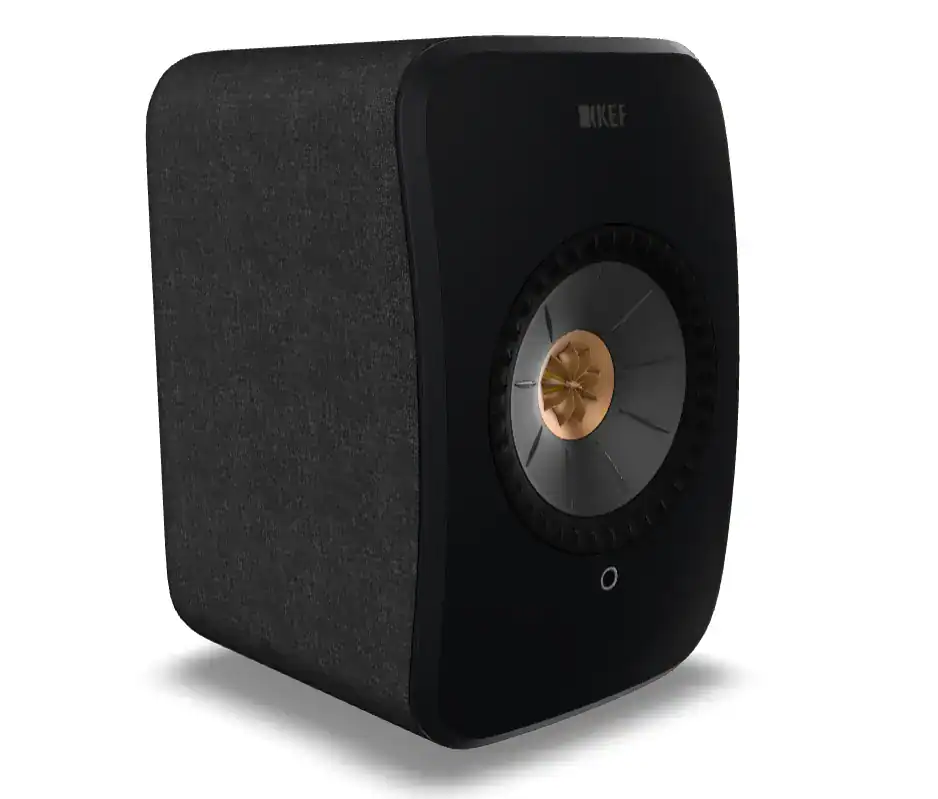
2. Bookshelf Speakers
Bookshelf speakers are compact, versatile speakers made for smaller rooms and desktop setups, usually measuring 6 to 8 inches wide and 10 to 15 inches tall. They typically handle frequencies from 80 to 120 Hz and work well for both music and home theater applications where space is limited.
These speakers mount on stands, shelves, or desks and usually have two-way designs with a woofer for mid-bass frequencies and a tweeter for high frequencies. The compact cabinet size limits low-frequency extension compared to larger speakers, but modern bookshelf speakers can deliver surprisingly full sound within their size limits.
Quality bookshelf speakers often include features such as rear-firing ports to extend bass response, precision crossover networks to blend drivers smoothly, and acoustic dampening materials to reduce cabinet resonance. When choosing the right speakers, similar technical considerations apply to driver quality and frequency response characteristics.
Placement significantly affects bookshelf speaker performance. Position speakers at ear level when seated, angle them slightly toward your listening position, and provide adequate space behind rear-ported models for proper bass reproduction. They work well in desktop setups, small to medium rooms, and as surround speakers in home theater systems.
For example, the Klipsch RP-600M II is a popular choice known for detailed sound and high efficiency.
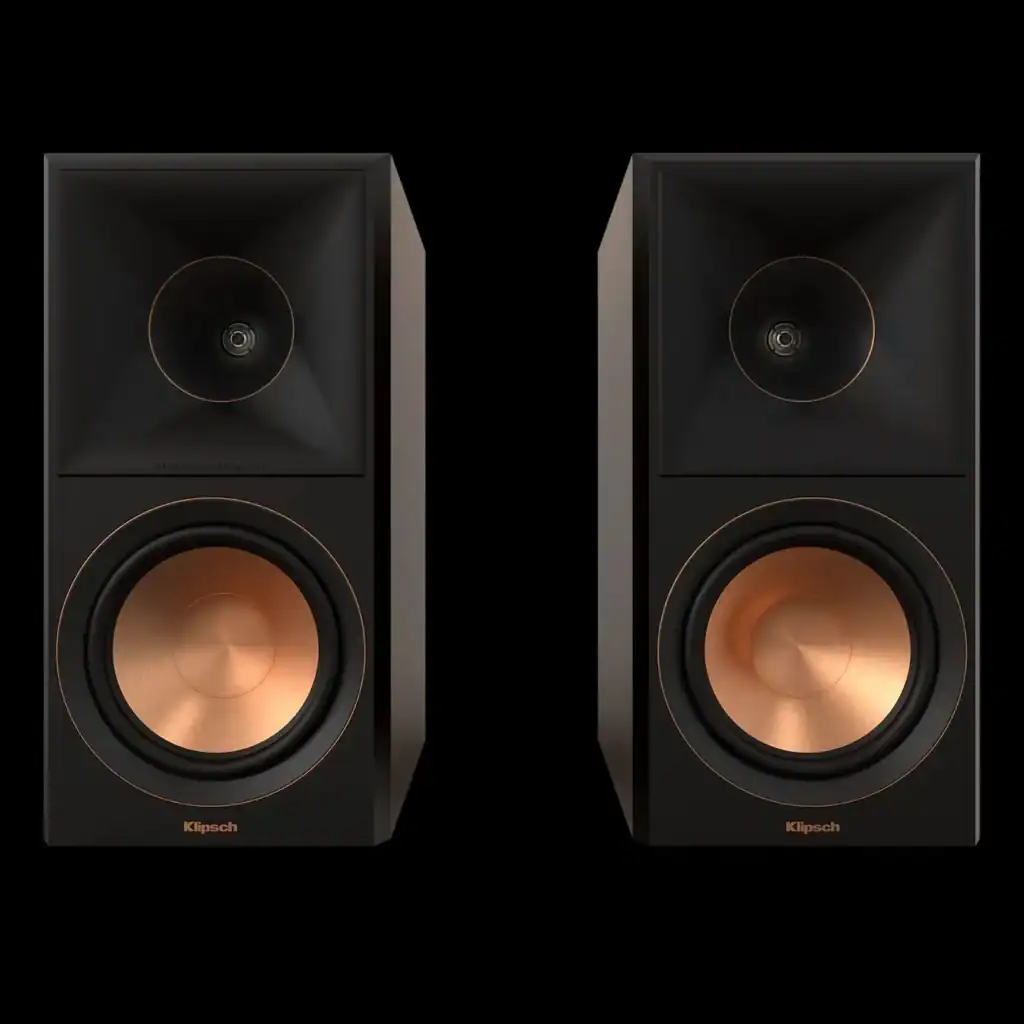
3. Floor Standing/Tower Speakers
Tower speakers are large, full-range speakers that deliver powerful sound with deep bass extension, usually standing 30 to 50 inches tall. They feature multiple drivers and can reproduce frequencies as low as 40 Hz with 8 to 10 inch woofers, making them suitable for larger rooms and serious music listening.
What do we call a big speaker?
Large speakers are typically called floor standing speakers, tower speakers, or full-range speakers. They deliver room-filling sound with deep bass response for larger listening spaces. These speakers often have multiple woofers, midrange drivers, and tweeters housed in tall cabinets that do not require stands or mounting hardware.
The multiple-driver design allows tower speakers to reproduce the entire audio spectrum without needing a subwoofer, though they still benefit from subwoofer integration in home theater applications.
Modern tower speakers often include bi-wire or tri-wire capabilities, allowing separate amplifier connections to different driver sections for improved performance. Consider room size, listening distance, and whether you need full-range capability or plan to add a subwoofer when choosing tower speakers.
Tower speakers perform well in medium to large rooms where their size provides better bass extension, higher maximum volume levels, and more dynamic sound reproduction. They usually offer better value than multiple smaller speakers plus subwoofers for two-channel music systems.
For example, the Q Acoustics 3050i is widely praised for its impressive sound quality and advanced technology at a relatively affordable price.
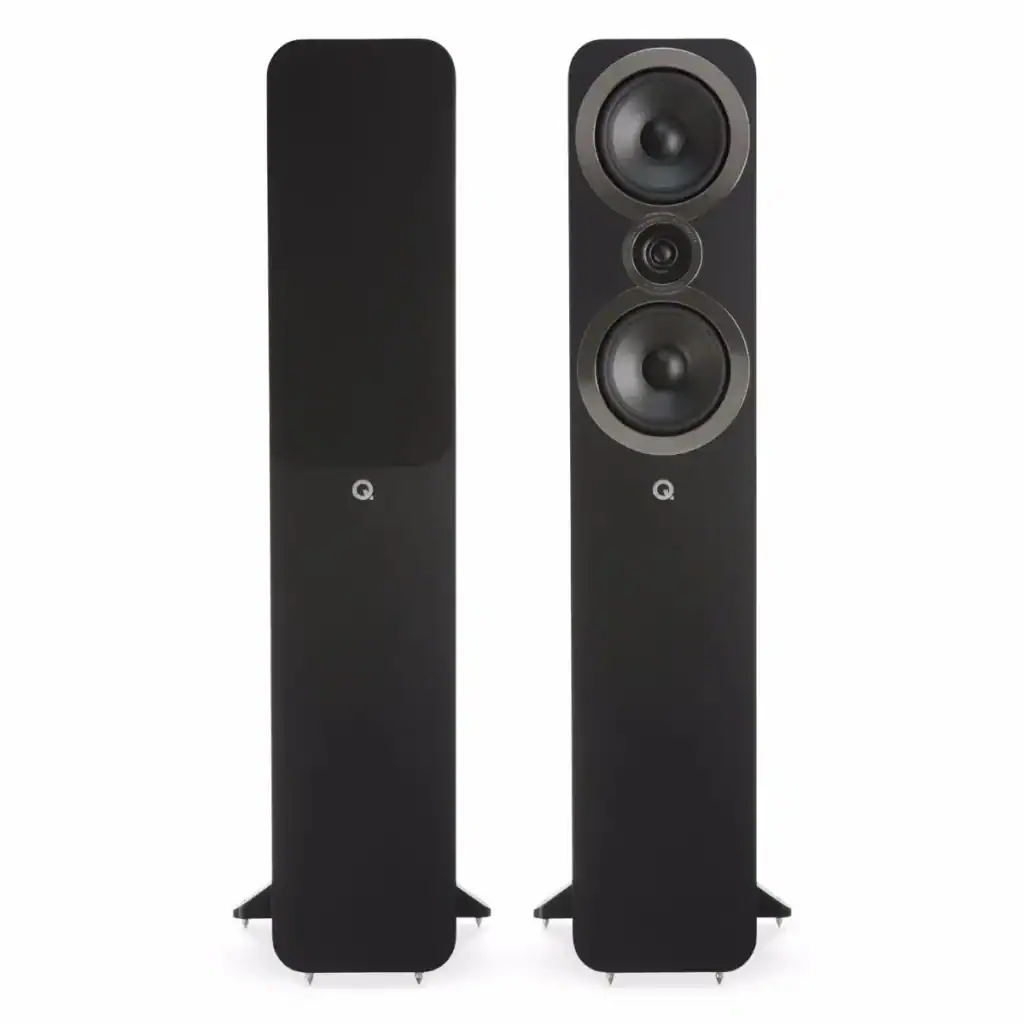
4. Center Channel Speakers
Center channel speakers handle dialogue and on-screen sound effects in home theater systems, usually placed directly above or below the television screen. These speakers are optimized for vocal clarity and anchoring on-screen action to the visual display.
Most center channel designs use horizontally oriented cabinets with multiple woofers flanking a central tweeter, ensuring consistent sound dispersion across wide seating areas. This setup allows viewers seated off-axis to hear clear dialogue and centered sound imaging.
THX certification standards specify performance requirements for center channel speakers, including frequency response, power handling, and directivity characteristics. Matching the center speaker to your main left and right speakers ensures consistent timbre across the front soundstage.
Placement height affects performance significantly, with ear-level positioning providing the best results when seated. When mounting below the screen, angle the speaker upward toward the listening position to improve clarity and maintain accurate sound localization with on-screen action.
For example, the Klipsch RP-504C II has four woofers and provides clear dialogue and vocals.
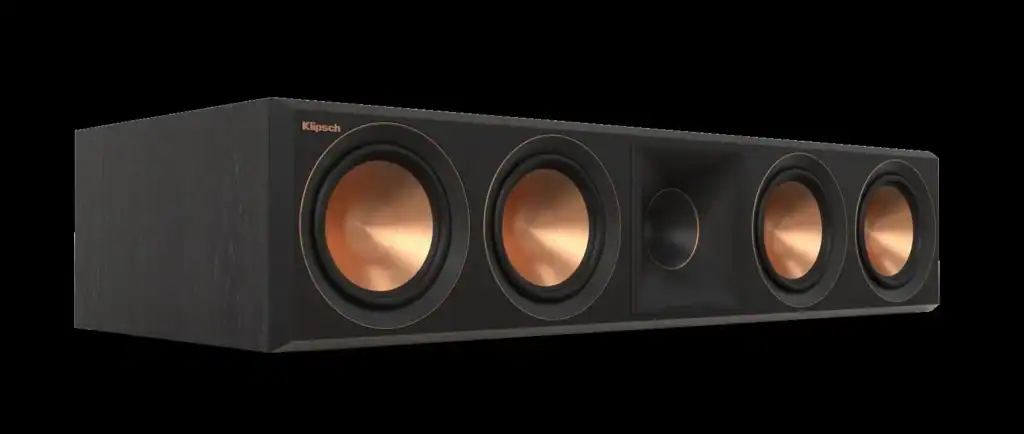
5. Surround and Satellite Speakers
Surround speakers create immersive audio environments by reproducing ambient effects and directional sounds from beside and behind the listening position.
Satellite speakers are small, compact units designed to blend into room decor while providing surround effects in home theater setups.
These speakers handle frequencies from the crossover point upward, typically 80 to 150 Hz depending on size and design. Their compact size allows flexible placement on walls, shelves, or stands without dominating room aesthetics or taking up valuable floor space.
Dipole and bipole surround speakers create diffuse sound fields that enhance ambiance without localizing specific effects, while direct-radiating designs provide precise sound localization for modern object-based audio formats. Home theater setup guidelines recommend specific placement angles and heights for optimal surround effects.
Matching surround speakers to front speakers ensures consistent timbral quality as sounds move around the listening environment. However, many systems use smaller surrounds paired with larger front speakers, relying on proper calibration to blend the system cohesively.
For example, the Polk Audio OWM3 is a versatile multi-position speaker that delivers clear ambient effects in a compact form.
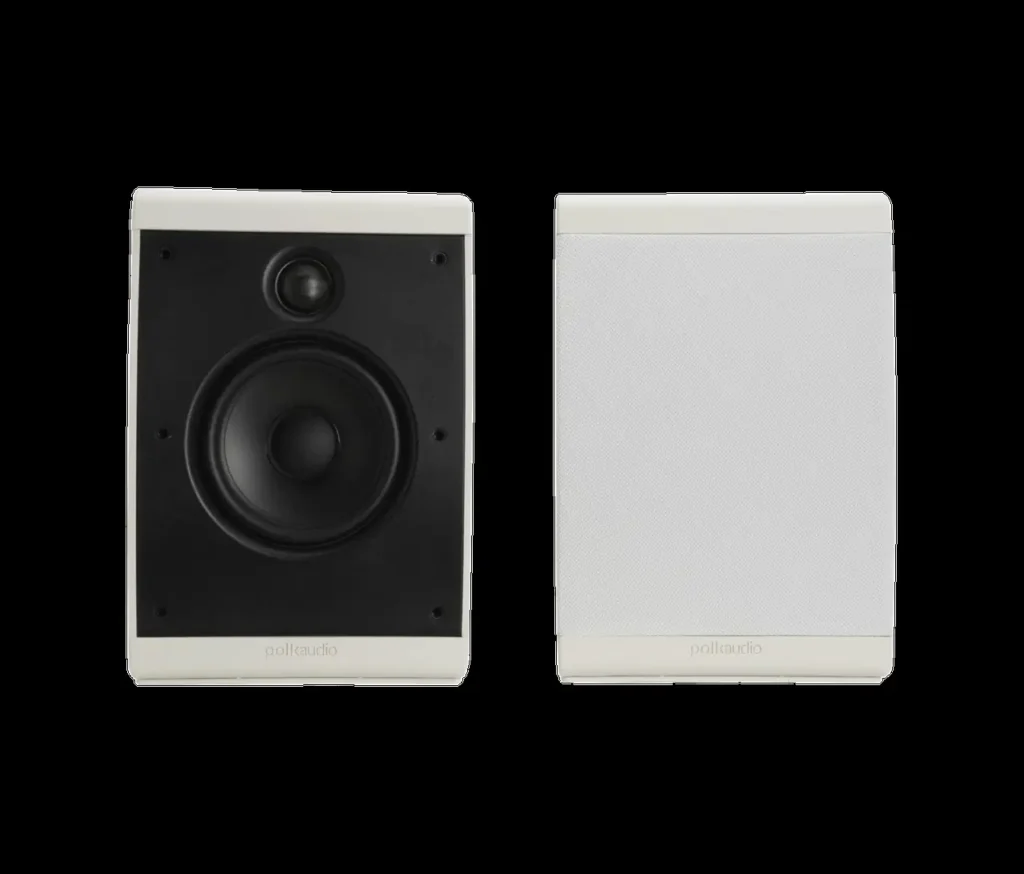
6. Subwoofers and Bass Speakers
Subwoofers specialize in reproducing low frequencies below 120 Hz, with a THX standard crossover set at 80 Hz for home theater applications. They improve any speaker system by managing bass frequencies that smaller speakers cannot reproduce effectively, whether for music, movies, or gaming audio.
Subwoofer designs include sealed enclosures for tight, accurate bass response and ported enclosures for higher output levels and deeper extension. Active subwoofers have built-in amplifiers and crossover controls, while passive subwoofers require external amplification like traditional speakers.
Proper subwoofer placement significantly affects performance and room integration. Corner placement usually provides maximum output but can create boomy sound, while positioning along walls offers a balance of output and control. Many audiophiles prefer multiple smaller subwoofers instead of single large units for more even bass distribution throughout the room.
Integration with main speakers requires careful attention to crossover frequency, phase alignment, and volume levels. Most home theater receivers include automatic room correction systems that measure and adjust subwoofer settings, but manual adjustment often produces better results for critical listening.
For example, the SVS SB-2000 Pro offers exceptional depth and customization options using advanced DSP technology.
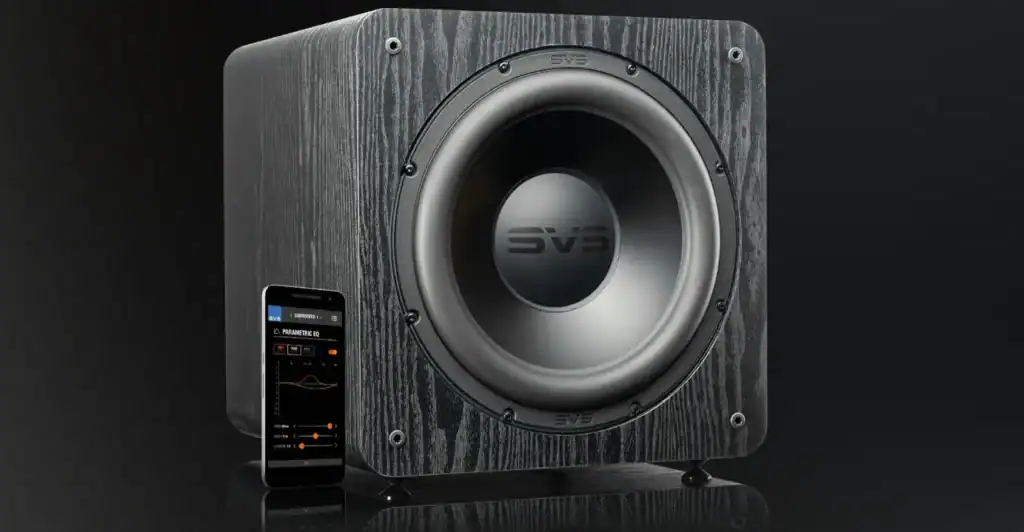
7. Portable and Bluetooth Speakers
Portable speakers prioritize convenience and mobility over maximum sound quality, using rechargeable batteries and wireless connectivity for audio on the move. Modern Bluetooth speakers provide impressive sound quality within their size limits and typically last 8-12 hours per charge with advanced power management.
Design compromises in portable speakers include smaller drivers that limit bass response, compact enclosures that reduce acoustic volume, and battery weight that affects portability. However, digital signal processing helps maximize performance from small components through techniques such as dynamic range compression and bass enhancement algorithms.
When evaluating Bluetooth codecs for wireless audio quality, higher-end portable speakers support advanced codecs such as aptX and LDAC, which provide better sound quality than standard Bluetooth connections. Improvements in battery technology now allow longer playback times while keeping devices compact.
Consider factors such as the intended use environment, required battery life, and sound quality expectations when choosing portable speakers. Rugged models offer waterproof ratings for outdoor use, while premium portable speakers prioritize audio quality for indoor and travel applications.
For example, the JBL Boombox 3 delivers strong bass and almost 30 hours of battery life with IP67 water resistance.
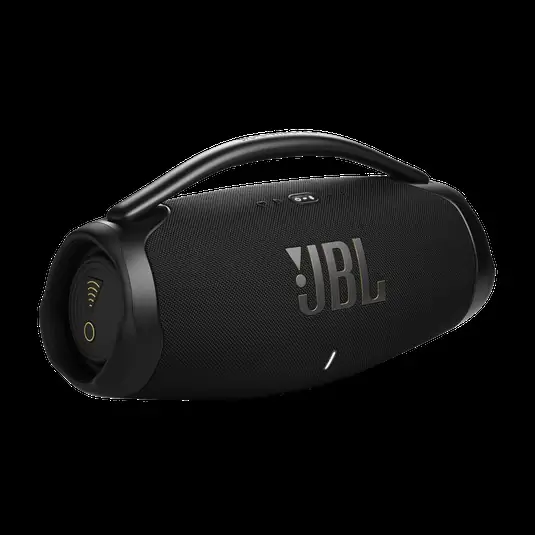
8. Smart Speakers
Smart speakers combine traditional audio playback with voice assistants and smart home control, accounting for 2.8% additional market growth due to AI-enabled features. They are the fastest-growing speaker category, with functions extending beyond music to home automation and information access.
Integration with streaming services, smart home devices, and voice recognition systems makes smart speakers central hubs for connected homes. Popular platforms include Amazon Alexa, Google Assistant, and Apple Siri, each offering distinct ecosystems and capabilities for music, information, and device control.
Sound quality in smart speakers varies significantly across price ranges, from basic voice-optimized models to premium versions with multiple drivers and advanced acoustic design. When choosing smart audio devices for your home, assess both audio performance and compatibility with your existing devices.
Multi-room audio capabilities allow synchronized playback across several smart speakers throughout your home, creating whole-house audio systems controlled through voice commands or smartphone apps. This feature connects traditional audio systems with modern connected home convenience.
For example, the Amazon Echo Studio combines excellent Alexa compatibility with five-speaker spatial audio and Dolby Atmos support in a high-quality package.
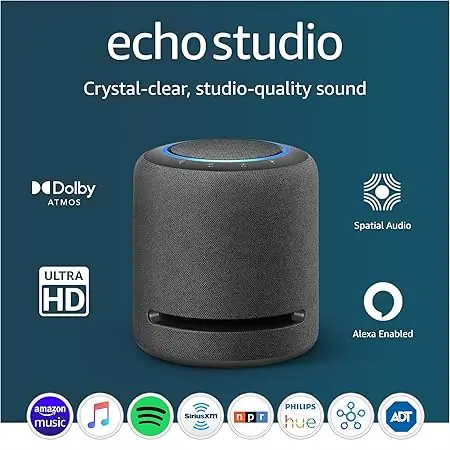
9. In-Wall and In-Ceiling Speakers
In-wall and in-ceiling speakers provide discrete audio solutions that integrate into room architecture without using floor or shelf space. Small satellite speakers typically cross at 150 to 200 Hz, requiring subwoofers for full-range reproduction in most installations.
Installation requires careful planning for correct placement, adequate backing support, and access for maintenance. Professional installation is often recommended to ensure optimal acoustic performance and to avoid construction issues with electrical wiring, plumbing, or structural elements.
Architectural speakers often include paintable grilles and trim rings that blend with room decor, making them nearly invisible when properly installed. However, placement constraints limit acoustic optimization compared to traditional speakers, which can be positioned for optimal performance.
These speakers perform well in distributed audio systems, home theaters where visual aesthetics matter, and spaces where traditional speakers would interfere with room function or design requirements.
For example, the Polk Audio RC80i provides quality in-ceiling sound with a paintable grille for seamless integration.
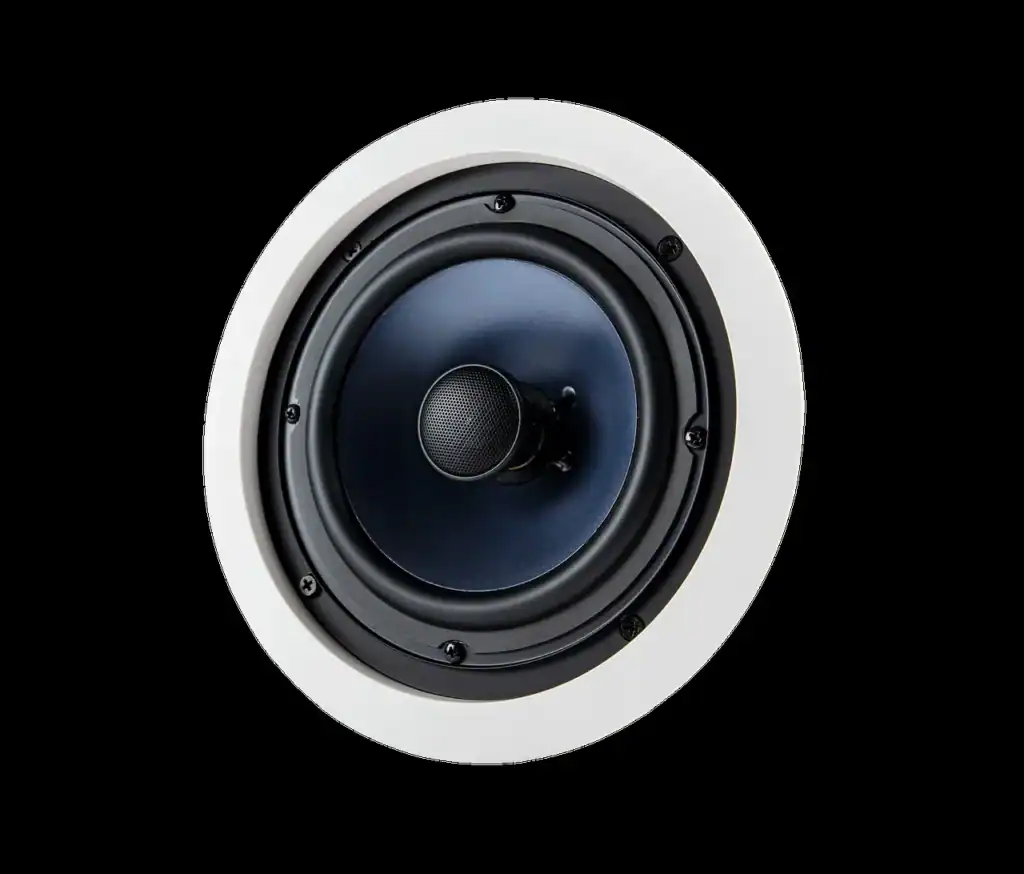
10. Outdoor Speakers
Outdoor speakers have weather-resistant construction with waterproof drivers, corrosion-resistant hardware, and UV-stable materials for year-round exterior use. Sound output and consistent sound reproduction face challenges from ambient noise, absence of room boundaries, and changing weather conditions.
Design considerations include wider dispersion patterns to cover outdoor seating areas, higher power handling to overcome wind and ambient noise, and durable enclosures that withstand temperature extremes and moisture exposure. Many outdoor speakers use horn-loaded designs for improved efficiency and projection.
Installation options include garden speakers that blend with outdoor design, rock speakers that resemble natural stones, and traditional box speakers with weather-resistant finishes. Placement strategy is crucial outdoors because sound waves dissipate without room reflections to reinforce audio.
Consider factors such as coverage area, ambient noise levels, and aesthetic integration when planning outdoor speaker systems. Professional installation often yields better results for complex outdoor audio projects involving multiple zones and weather protection.
For example, the Klipsch AW-650 features all-weather construction with horn-loaded technology for superior outdoor projection.
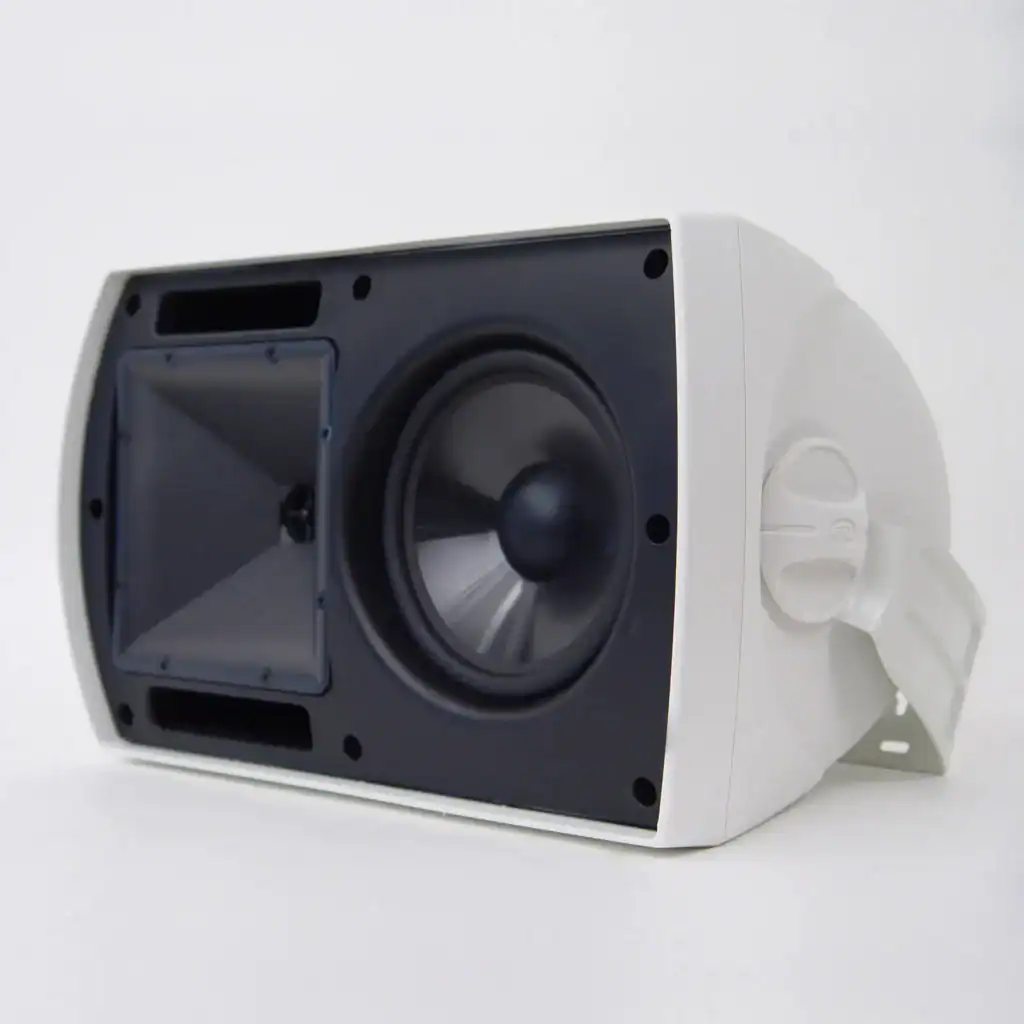
11. Computer and Desktop Speakers
Computer speakers are designed for near-field listening at desktop distances, typically featuring compact designs optimized for close-range audio reproduction. Headphones and headsets offer alternative solutions for desktop audio, but speakers provide shared listening and ambient sound benefits.
Desktop speaker systems range from basic two-piece designs to multi-driver systems with separate subwoofers and satellite speakers. USB-powered speakers eliminate external power adapters, while larger systems require dedicated power connections for adequate performance.
Gaming applications often benefit from surround sound capabilities, either through multiple speaker positioning or digital processing that creates spatial audio effects from stereo speakers. Some computer speakers include gaming-specific features such as customizable RGB lighting and software-based audio profiles.
Professional applications like content creation and audio editing require monitor-quality speakers with flat frequency response instead of consumer speakers with enhanced bass or treble. Studio monitor designs adapted for desktop use provide more accurate audio reproduction for critical listening tasks.
For example, the Logitech Z623 provides powered desktop performance with Bluetooth connectivity at an affordable price.
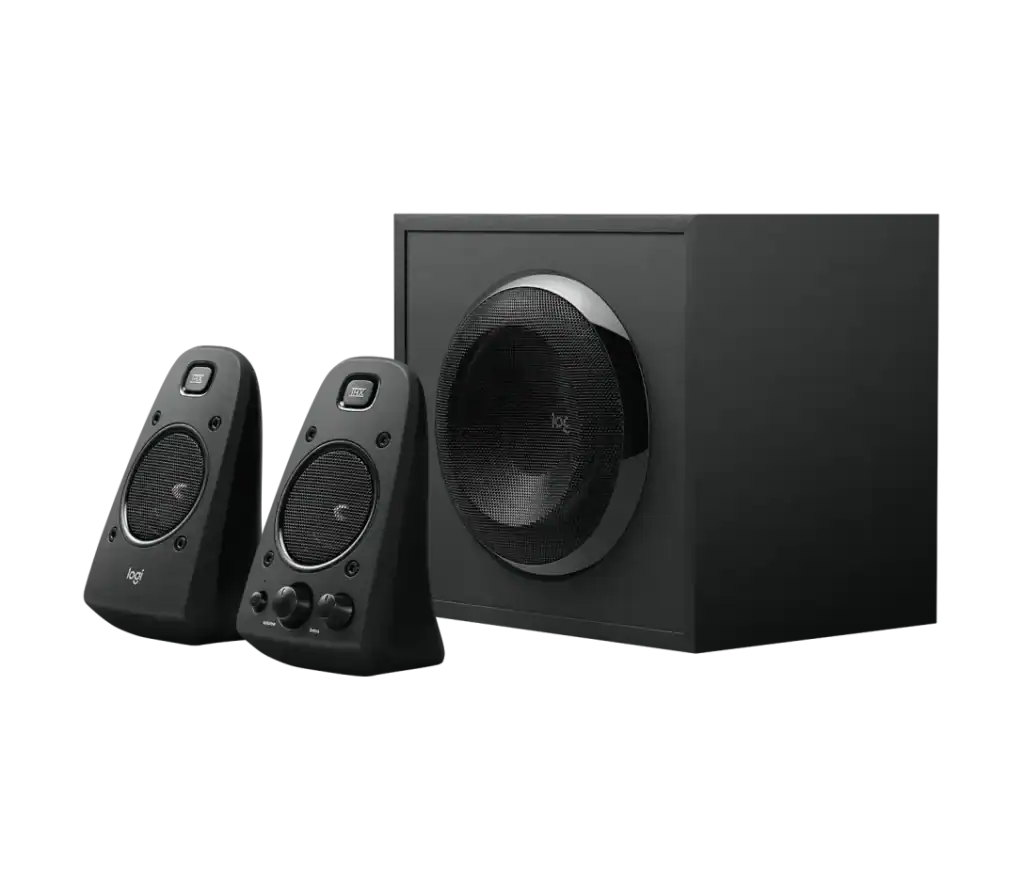
12. Monitor Speakers
Monitor speakers prioritize accuracy over subjective sound coloration and are intended for professional applications requiring precise audio reproduction. Home recording studio setups benefit from monitor speakers that reveal mix details and frequency balance issues that consumer speakers might conceal.
Near-field monitors are intended for close listening distances typical in control rooms and home studios, while far-field monitors accommodate larger spaces and higher output levels. Active monitoring systems often include room correction features and multiple input options to meet professional connectivity requirements.
Frequency response specifications for monitors emphasize flatness across the audible spectrum instead of enhanced bass or treble response preferred in consumer applications. This accuracy enables audio professionals to make mixing and mastering decisions that translate well to various playback systems.
Professional monitors often include features such as multiple input options, room position switches that adjust frequency response for placement near walls, and advanced crossover designs that ensure phase coherence between drivers across the frequency spectrum.
For example, the Yamaha HS5 is a widely trusted near-field monitor recognized for its neutral sound signature and accuracy.
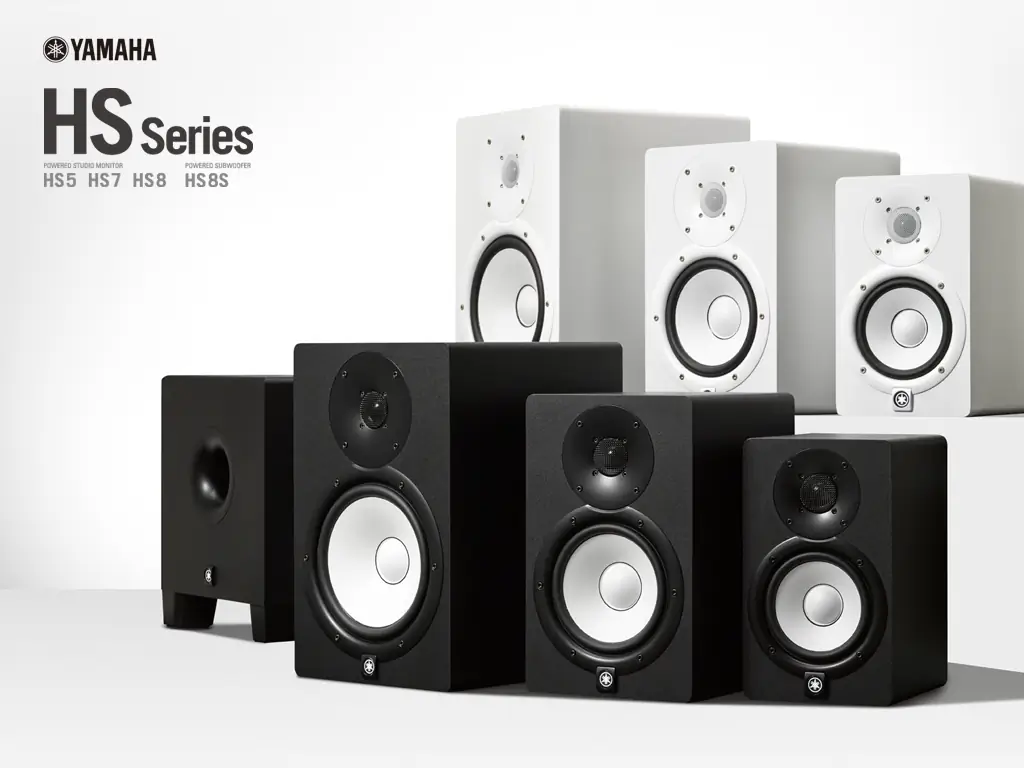
13. Automotive/Car Audio Speakers
Car audio systems face unique challenges, including road noise, irregular cabin shapes, and power limitations that require specialized speaker designs.
Different types of microphones are relevant for automotive applications such as hands-free calling and voice recognition systems integrated with car audio.
Component systems separate tweeters, midrange drivers, and woofers for optimal placement throughout the vehicle cabin, while coaxial speakers combine multiple drivers in single units for easier installation. Factory replacement speakers must fit existing mounting locations and power requirements.
Sound deadening materials and strategic placement help reduce road noise and cabin acoustics issues that affect automotive audio quality. Advanced car audio systems include digital signal processing to adjust for cabin irregularities and multiple listening positions.
Installation considerations include power handling compatible with vehicle electrical systems, weather resistance for components exposed to moisture, and integration with existing vehicle electronics such as steering wheel controls and display systems.
For example, the JBL GTO629 offers high sensitivity and power handling appropriate for automotive applications.
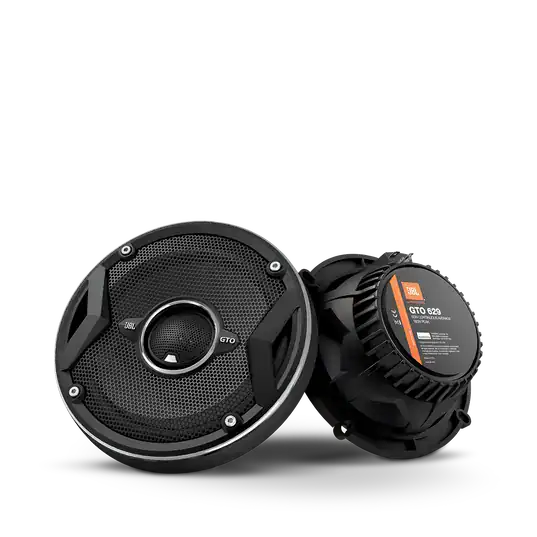
14. Soundbars
Soundbars provide simplified home theater audio in single-cabinet designs that improve television sound quality without complex multi-speaker installations. Integration with sound systems and surround sound systems allows soundbars to create immersive audio experiences from compact form factors.
Which is better, 2.1 or 5.1 speakers?
5.1 systems provide true surround sound with improved dialogue clarity and immersion for movies, while 2.1 systems are better suited for smaller rooms and music listening, offering simpler setup and lower cost. The choice depends on room size, content preferences, and tolerance for setup complexity.
Modern soundbars include features such as wireless subwoofers, upward-firing drivers for height effects, and digital processing that simulates surround sound from a limited number of physical drivers. Premium models support advanced audio formats including Dolby Atmos and DTS:X for immersive audio.
Connection options include HDMI ARC for simplified TV integration, optical digital inputs for older devices, and Bluetooth connectivity for smartphone and tablet audio. Some soundbars include HDMI switching to act as audio hubs for multiple source devices.
Soundbar performance varies significantly with price and design complexity, ranging from basic TV audio enhancement to advanced systems that approach traditional surround sound quality while maintaining visual simplicity and easy installation.
For example, the Sonos Arc Ultra delivers premium Dolby Atmos performance with extensive streaming options.
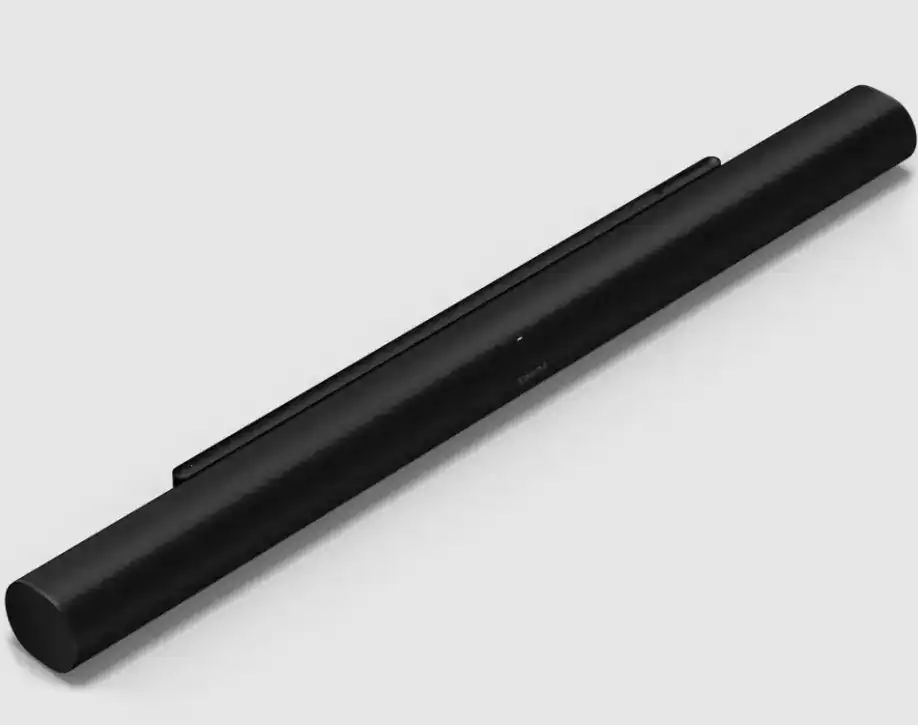
15. PA and Column Speakers
Public address speakers are designed for clear speech and wide coverage in commercial and institutional settings. Column speakers use multiple drivers arranged vertically to control sound dispersion and reduce feedback in live sound applications.
Line array principles enable column speakers to direct sound toward audiences while minimizing ceiling reflections that cause echo and reduce clarity. These designs perform especially well in reverberant spaces such as gymnasiums, churches, and conference facilities where traditional speakers are less effective.
Power handling capabilities in PA speakers accommodate the high output levels required for large spaces and noisy environments. Professional features include multiple input options, mixer integration capabilities, and mounting hardware for permanent installations.
Consider factors such as coverage area, ambient noise levels, and speech versus music applications when specifying PA speaker systems. Consulting a professional often helps optimize system design for specific architectural and acoustic requirements.
For example, the JBL Professional EON ONE combines a column array design with built-in mixing and Bluetooth connectivity for portable PA applications.
Conclusion
Knowing these speaker types helps you make informed decisions based on your specific needs, whether portable convenience, home theater immersion, or professional monitoring accuracy.
From active speakers that simplify setup to tower speakers that deliver room-filling sound, each category serves distinct purposes in the audio system.
The key is matching speaker characteristics with your listening environment, content preferences, and technical requirements.
FAQs
1) What Are Different Types of Speakers?
Speakers fall into categories based on power source, size, and use, including active or passive, bookshelf, floor-standing, portable, outdoor, and specialized types such as monitors and subwoofers for various listening environments and requirements.
2) What Do We Call a Big Speaker?
Large speakers are typically called floor standing speakers, tower speakers, or full-range speakers. They deliver powerful sound with deep bass response for larger rooms and serious listening applications.
3) Which Is Better, 2.1 or 5.1 Speakers?
5.1 systems provide true surround sound with clearer dialogue and greater immersion for movies, while 2.1 systems are better suited for smaller rooms and music listening, offering simpler setup and lower cost.
4) What’s Better, a 1000 Watt or 300W Speaker?
Higher wattage does not guarantee better sound quality; speaker sensitivity is more important for actual volume output. A 300W speaker with higher sensitivity can be louder than a 1000W speaker with lower efficiency ratings.



